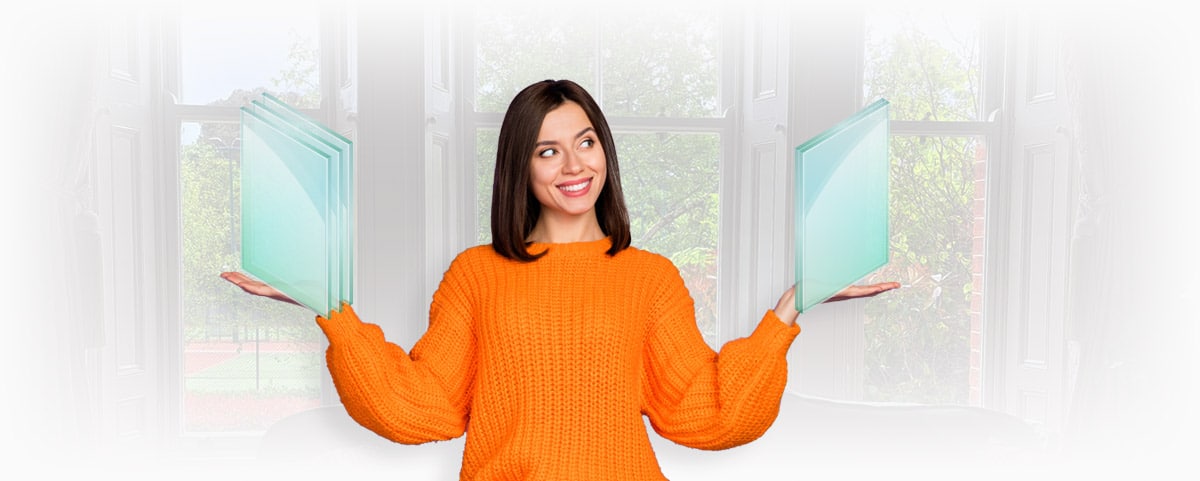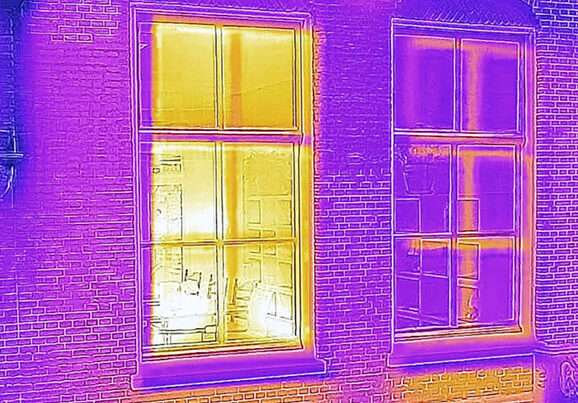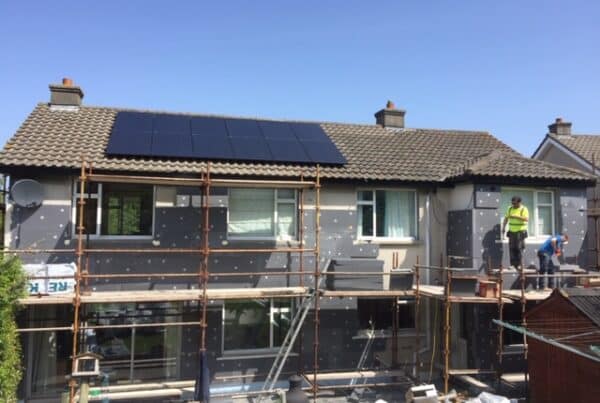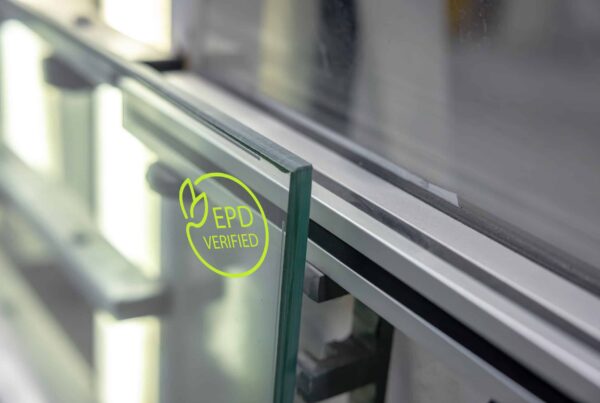Types of Energy Efficient Windows: Which One Is Right for Your Home?
Energy efficiency has become one of the most important considerations for UK homeowners when upgrading their properties. Rising energy bills, stricter building regulations, and the urgent need to reduce carbon emissions have made high-performance windows less of a luxury and more of a necessity. Yet, with so many options available — from standard double glazing to advanced vacuum insulated glass — the landscape can feel confusing.
If you’ve ever wondered which type of window really makes the difference, this guide is for you. We’ll walk you through the different types of energy efficient windows, compare how they perform in real-world UK conditions, and show you why vacuum glazing is increasingly recognised as the next step in sustainable window technology.
Why Energy Efficient Windows Matter
Windows are more than just a way to bring in light and connect us to the outdoors. They’re also one of the biggest sources of heat loss in a home. According to the Energy Saving Trust, poorly performing windows can account for up to 20% of a property’s energy loss.
Efficient windows improve thermal comfort, reduce condensation, and cut down on external noise — but the biggest impact is financial. Lower heat loss means less energy consumed, which directly translates into smaller energy bills. With the government targeting net-zero by 2050, energy efficient glazing also helps future-proof your home against tightening regulations.
The Main Types of Energy Efficient Windows
Single Glazing (The Starting Point)
Single glazing is the traditional form of glazing you’ll still find in many period and heritage homes. Consisting of just one sheet of glass, it has virtually no insulating properties. Heat escapes easily, cold draughts come in, and condensation is common.
While single glazing can look beautiful in heritage timber frames, it is also the least efficient option — with a typical U-value (a measure of heat transfer) of around 5.8 W/m²K. For context, modern building standards require windows to achieve at least 1.6 W/m²K or lower.
Standard Double Glazing
Double glazing has been the UK standard since the 1980s. Two panes of glass are separated by a 20mm cavity, filled with argon or krypton gas. These gases are denser than air, slowing down heat transfer.
Typical performance:
- U-value:2 – 1.5 W/m²K
- Noise reduction: ~30–32 dB
- Lifespan: 10–15 years (gas leakage through porous seals is common)
Double glazing dramatically outperforms single glass, but it has limitations. The bulky frames required make it unsuitable for listed buildings, and over time, the insulating gases escape, reducing efficiency.
Triple Glazing
Triple glazing builds on the double glazed concept with a third pane of glass and two cavities filled with gas. It can achieve U-values as low as 0.8 W/m²K and is increasingly used in new-builds to meet stringent Part L regulations.
Typical performance:
- U-value:8 – 1.0 W/m²K
- Noise reduction: ~34–36 dB
- Lifespan: 15–20 years
While efficient, triple glazing comes with trade-offs. Units are heavy, putting strain on frames and walls, and thicker profiles reduce the amount of natural light coming into a room. For heritage properties, it is rarely permitted due to visual impact.
Slimline Double Glazing
Slimline units were designed specifically for heritage homes and conservation areas. These use thinner panes and narrower cavities filled with inert gas to mimic the appearance of single glazing while offering modest thermal improvements.
Typical performance:
- U-value:9 – 2.4 W/m²K
- Noise reduction: ~28–32 dB
- Lifespan: 5–10 years (slim seals often fail early)
The issue is durability. By slimming down seals and cavities, slimline units are prone to moisture ingress and early gas loss. Many homeowners have experienced failure within a decade.
Secondary Glazing
Secondary glazing involves adding a discreet internal pane behind an existing single-glazed window. It is often used in listed buildings where replacing original glass isn’t allowed.
Performance varies depending on the gap created between panes, but it typically reduces draughts and noise rather than significantly boosting insulation.
Typical performance:
- U-value:8 – 2.0 W/m²K
- Noise reduction: 35–40 dB
- Lifespan: 15+ years (depending on framing system)
While useful as a stopgap, secondary glazing can be visually intrusive inside the home and doesn’t solve the underlying inefficiency of the original window.
Vacuum Glazing (Fineo: The Next Generation)
Vacuum glazing is the most advanced technology currently available. Instead of filling a cavity with gas, it removes all air entirely, creating a vacuum between two thin panes of glass. Because heat and sound cannot travel through a vacuum, performance is exceptional — even though the cavity is less than half a millimetre thick.
Typical performance:
- U-value:4 – 0.7 W/m²K (better than triple glazing)
- Noise reduction: 36–39 dB
- Thickness: Just 6–8 mm (similar to single glazing)
- Lifespan: 60+ years (with a 20-year Fineo warranty)
Fineo vacuum glazing, manufactured in Belgium by AGC, combines the elegance of single glazing with the performance of triple glazing. Because it’s so thin and lightweight, it can be retrofitted directly into existing timber or steel frames, making it ideal for heritage homes and listed buildings.
From the outside, vacuum glazing looks identical to traditional glass, but inside the home it transforms comfort — eliminating draughts, reducing heating bills, and blocking external noise.
Comparing the Options
| Window Type | U-Value (W/m²K) | Noise Reduction (dB) | Thickness | Lifespan | Suitability |
| Single Glazing | ~5.8 | 20–25 | 3–4 mm | 50+ yrs | Heritage, but inefficient |
| Slimline Double | 1.9–2.4 | 28–32 | 10–12 mm | 5–10 yrs | Heritage retrofits, short lifespan |
| Standard Double | 1.2–1.5 | 30–32 | 24–28 mm | 10–15 yrs | Modern homes |
| Triple Glazing | 0.8–1.0 | 34–36 | 36–44 mm | 15–20 yrs | New builds, high efficiency |
| Secondary Glazing | 1.8–2.0 | 35–40 | Varies | 15+ yrs | Listed buildings |
| Vacuum Glazing | 0.4–0.7 | 36–39 | 6–8 mm | 60+ yrs | Heritage, modern, listed, passive homes |
Environmental Impact
When evaluating energy efficient windows, it’s not just about performance but also sustainability.
- Double & Triple Glazing: Require energy-intensive noble gases like argon or krypton. Over time, gases leak, reducing efficiency and necessitating replacement.
- Slimline Glazing: Short lifespan means frequent replacements, creating waste.
- Vacuum Glazing (Fineo): Contains no gases, is 100% recyclable, and is manufactured locally in Belgium using low-carbon energy and on-site solar. With an expected lifespan of 60 years, Fineo reduces both manufacturing impact and long-term waste.
Why Vacuum Glazing Stands Out
Vacuum glazing isn’t just another option — it represents a leap forward in window technology. For heritage property owners, it is often the only solution that meets planning requirements without compromising aesthetics. For modern homeowners, it’s a future-proof investment that outperforms current regulations and delivers long-term cost savings.
Yes, the upfront cost is higher than standard double glazing. But when you factor in energy savings, reduced maintenance, and the fact you may never need to replace them in your lifetime, vacuum glazing often works out as the most economical choice in the long run.
FAQs: Types of Energy Efficient Windows
What type of window is best for listed buildings?
Vacuum glazing is widely considered the best option for listed buildings because it matches the appearance of single glazing while delivering superior thermal performance. Fineo vacuum glazing is only 7.7mm thick, making it acceptable to conservation officers.
Is triple glazing always better than double glazing?
Triple glazing provides lower U-values than double glazing, but it is thicker, heavier, and often unnecessary in the milder UK climate. Vacuum glazing achieves even better insulation without the drawbacks.
How long does energy efficient glazing last?
Standard double glazing typically lasts 10–15 years before seals fail. Slimline glazing can fail within 5–10 years. Triple glazing can reach 20 years. Fineo vacuum glazing, however, carries a 20-year warranty and has a lifespan of over 60 years.
Can vacuum glazing be used in modern homes as well as heritage ones?
Absolutely. While perfect for heritage applications, vacuum glazing is also ideal for modern homes. Its U-values already exceed the upcoming 2025 Future Homes Standard, making it a smart investment for long-term compliance.
Is vacuum glazing environmentally friendly?
Yes. Fineo vacuum glazing is made in Belgium using renewable energy, contains no harmful gases, and is 100% recyclable. Its long lifespan means fewer replacements, reducing overall environmental impact.
The Clear Choice
From single glazing to slimline, double, triple, and vacuum glazing, the options for energy efficient windows vary widely in performance, durability, and sustainability. While standard solutions have their place, the reality is clear: vacuum glazing offers the best balance of heritage compatibility, cutting-edge performance, and long-term value.
Whether you’re preserving a Georgian townhouse, upgrading a Victorian terrace, or building a modern eco-home, Fineo vacuum glazing represents the future of window technology — available today.




